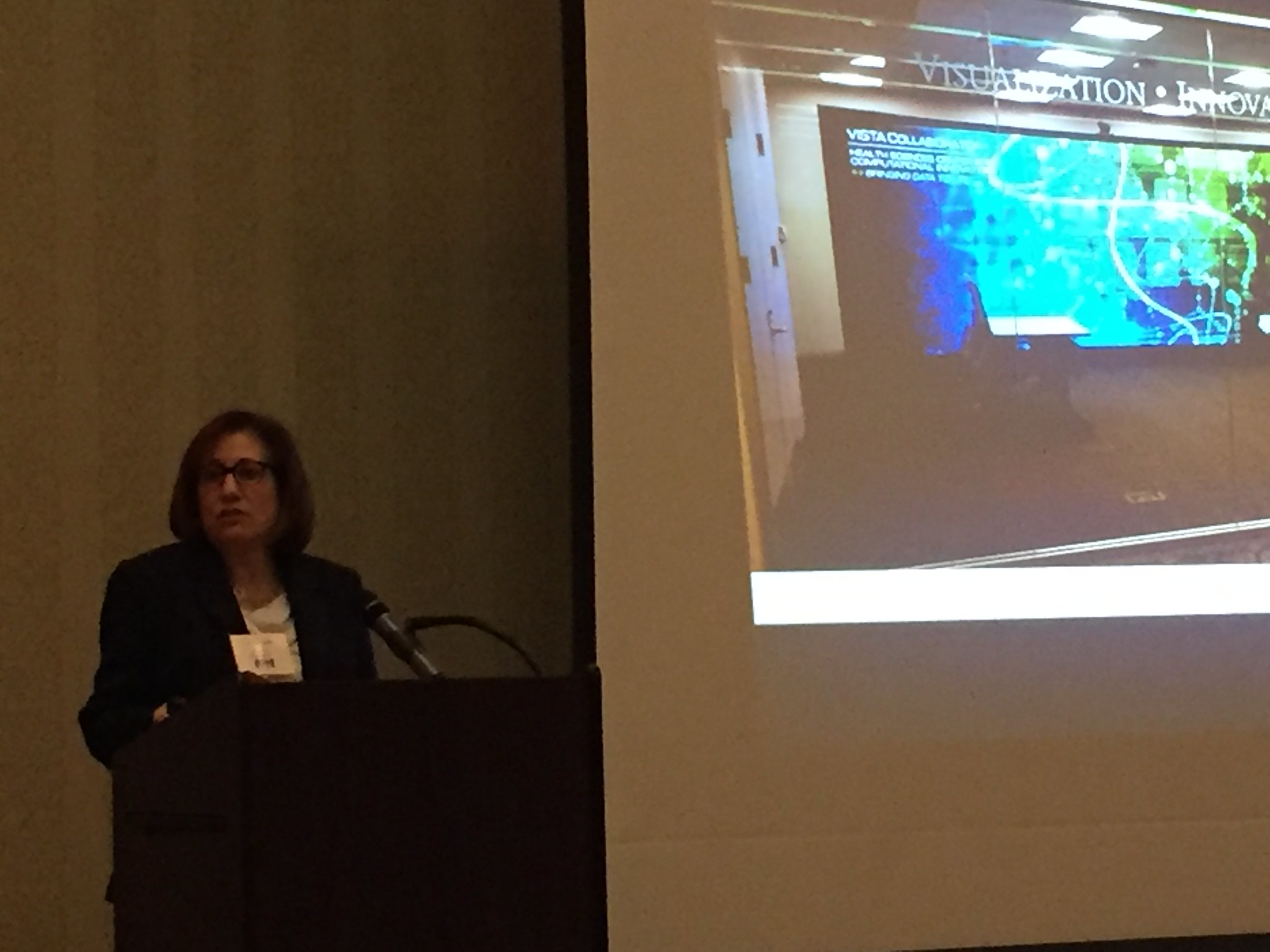 Nancy Fried Foster provided the keynote presentation at the 2016 Upstate New York and Ontario Chapter (UNYOC) of the Medical Library Association Annual Meeting in Watkins Glen, NY.
Nancy Fried Foster provided the keynote presentation at the 2016 Upstate New York and Ontario Chapter (UNYOC) of the Medical Library Association Annual Meeting in Watkins Glen, NY. According to Foster, library design can be done at a low risk, while responding to the needs of your community and being relevant for the future.
Driving library change with research (her agenda):
- User centered design is based on current evidence.
- It is participatory and inclusive.
- Solutions are not based on assumptions or outdated information.
- It is a research based approach.
Methods:
- One way of collecting evidence is a work practice study. What tools are people using? Where do they keep things? Can you video people doing their work, then review the video with them in order to gather more information.
- In looking at classroom space, what will the work patterns of the students be in that space?
- Can you get people to draw solutions and then talk to them about what they've drawn? That would allow you to annotate the drawing. That could be done in a design workshop.
- Another method is observation. Observation can take many forms, depending on your project. This methods allows you to slow down, look, and listen.
- In doing retrospective interviews, you ask people how they completed a piece of work. You annotate the story as the person tells it.
- Workplace interviews allows you to gather information from the person while they are in their world. You might consider video recording the interview,which will might give you information about the space and how the person uses the space.
- In photo elicitation interviews, you have people take photos based on prompts. For example, have students take a photo of what they have in front of them when they do homework. .
- You can use a map diary to have people map or log their movements over the course of a day. The next day, the map prompts them to tell you the story of the day, what they did where and what resources they used. .
- Reply cards are like a mini survey. Samples questions include:
- What is the person doing?
- If the person had to work elsewhere, where would that be?
- What resources is the person using?
- Snapshot interviews can be done anywhere and are brief. Are good to get quick input from people outside of the library.
A few examples of analysis:
- Co-view - videos, photos, transcripts
- Coding - with software or manually. Allows you to analyze transcripts and data.
- Compare - visually inspect,categorize, compare and contrast.
Interpretation: Foster noted that the process can be lengthy. In some instances, it can take years. She cautioned to start small and get a "win", if possible.
She noted that there was a 2015 presentation entitled "A day in the life of a medical student: applying ethnographic methods in academic health sciences settings."
She said that interesting work at the Miner Library at the University of Rochester (NY). [Lorraine Porcello is involved in this.]
Ethnographic research is not enough. It is also necessary to build collaboration all along the way. In other words, you cannot do this work in a vacuum. You need to understand what else is happening in your organization.
No comments:
Post a Comment